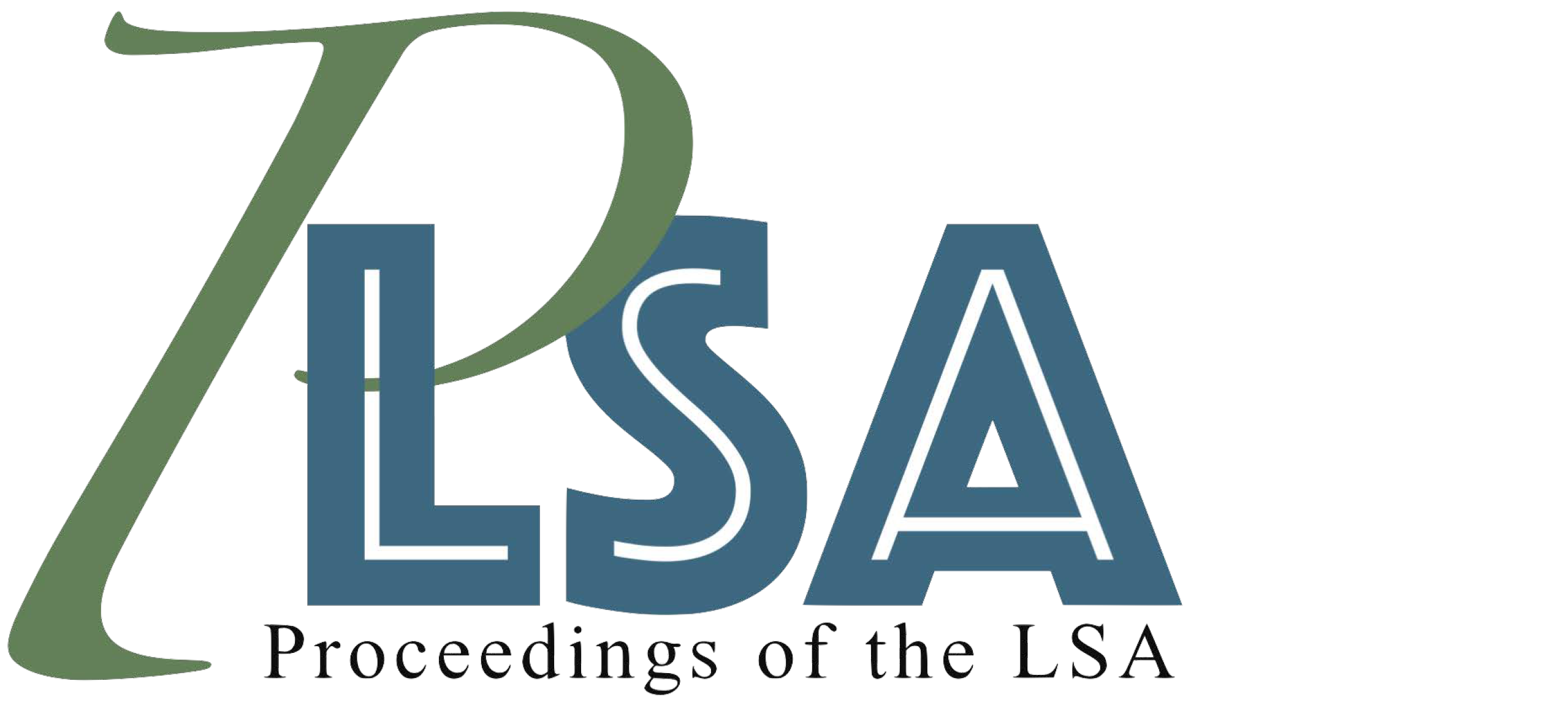Prosodic boundary processing is language-dependent
DOI:
https://doi.org/10.3765/plsa.v10i1.5884Keywords:
prosody, Japanese, English, spontaneous speech, Rapid Prosody Transcription (RPT), boundary cuesAbstract
This paper provides empirical data to support the claim that prosodic boundary processing is language-dependent. Prosody plays an important role in determining the meaning of the utterance. Despite their importance in speech recognition, prosodic boundaries in spontaneous speech are understudied, and the finding that syntactic and prosodic boundaries are not isomorphic complicates automatic speech recognition. This paper considers how prosodic boundaries are perceived in spontaneous speech via perception experiments.
We will consider Japanese first. It is a mora-timed pitch language and typologically different from stress languages like English. Japanese prosody is complex; it is compositionally formed by the lexical pitch accents H*L, phrasal tones, and boundary tones (L%, H%, LH%, HL%). Though Japanese literature has a long history of prosodic studies on the word-level and the phrase-level, prosody above the φ-level is understudied and no standard view for phrasal patterns has ever been established. We conducted perception experiments on spontaneous Japanese via Rapid Prosody Transcription (RPT) and conducted multiple regression analyses between boundary marking and cue candidates. Our findings are that the primary cue for boundary perception in Japanese is post-boundary pause, followed by syntactic higher categories.
On the other hand, prosody of stress languages is well-studied, and the studies claim that the prosodic boundary cues in such languages are either acoustic (e.g. French, etc.) or syntactic (e.g. American English, Estonian, etc.). If boundary cues vary between Japanese and American English, it is expected that Japanese learners of English process prosodic boundaries differently from native American English listeners. We did a comparative study and analyzed how native listeners and learners would perceive the same English natural speech. We reanalyzed the RPT data in Cole et al. 2010 and Mizuguchi et al. 2016 and found that native listeners and learners use different perception cues.
Downloads
Published
Issue
Section
License
Copyright (c) 2025 Shinobu Mizuguchi, Koichi Tateishi

This work is licensed under a Creative Commons Attribution 4.0 International License.
Published by the LSA with permission of the author(s) under a CC BY 4.0 license.
